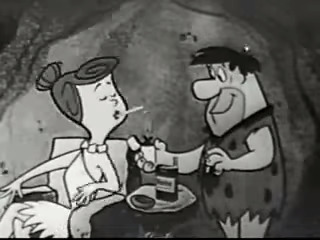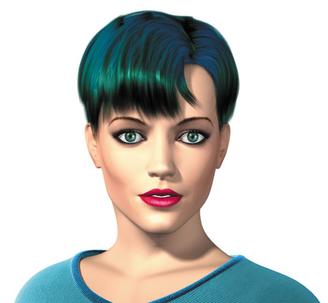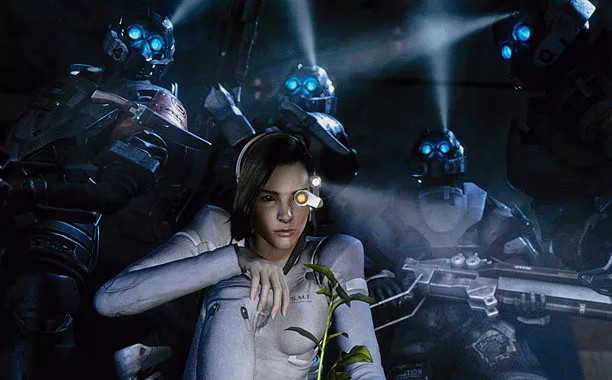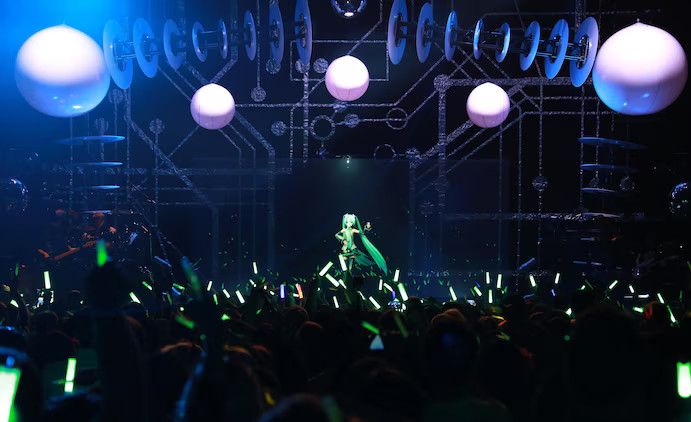 The future of entertainment
The future of entertainment
Technology isn't just for digital transformation. We often see technology leveraged in entertainment.
Technology changes all the time, and those changes are driven by us. The most recent innovation is generative text AI like OpenAI's ChatGPT and Google Bard. These AI are trained on existing works and generate new text based on prompts. The technology is incredible. Although not yet flawless, generative AI is already transforming how we work.
Technology also influences our perceptions of culture, art, and entertainment. When you consider entertainment, it’s not just about how technology will change the platforms artists use to create, produce, publish and distribute their work—but how technology might even replace the artists themselves.
Consider the current SAG/AFTRA strike. A major point of contention is the use of AI and virtual representation in entertainment, such as how it might replace actors. The concern is that this application of technology encompasses more than just digital "de-aging" of actors, but could in theory replace the actor altogether.
Virtual avatars in advertising
The concept of digital representations replacing actors is not a new idea. One example from the recent past is advertising. Virtual characters have been used to advertise products for decades. For example, in the early 1960s, popular cartoon characters Fred Flintstone and Barney Rubble pitched Winston Cigarettes. Throughout the show’s run in the 1960s, the Flintstones advertised other products, including jam and antacids.

Cartoon characters remained popular as advertising mascots. Although real-world actors more frequently pitched products, virtual mascots dominate certain markets. As technology changed and avatars could be generated by computers, virtual mascots changed too.
One memorable milestone in virtual marketeers is video game character Lara Croft of the Tomb Raider game series. Lara was arguably the most popular action game star at the time, dominating the PlayStation console throughout the late 1990s and into the early 2000s. During the height of her popularity, GlaxoSmithKline brand Lucozade “hired” Lara to pitch energy drinks. Later, Lara advertised cars for French manufacturer SEAT in 1999.

Virtual avatars in entertainment
Computer-generated characters can do more than advertise products. You may also remember the short-lived Ananova, the first computer-generated virtual newsreader. In 2000, visitors to the Ananova.com news website could watch and listen to a custom news broadcast anchored by the virtual Ananova. Just like tuning into CNN, Ananova read summaries of the day’s news stories. For most stories, Ananova used a default serious tone. But through then-innovative rendering technology, Ananova could provide additional inflection. For example, during light moments, such as entertainment stories, Ananova might give a smirk.

In 2001, the computer-animated movie Final Fantasy: The Spirits Within introduced the first “syn-thespians,” virtual actors that seemed as realistic as human actors. Here, the protagonist Doctor Aki Ross and the entire cast were computer-generated characters, based on performances by real actors on motion-capture stages. For example, actress Ming-Na Wen provided the performance for Ross.

AI and virtual avatars
But these virtual characters were simple playback of a real-world actor’s earlier performance, presented through a computer-generated avatar. This changed in the early 2000s with the introduction of the “vocaloid,” a computerized voice that uses samples from dozens of performers to create its own singing voice and style.
In Japan, Hatsune Miku may be the most popular vocaloid. And the Japanese entertainment industry has even advanced the vocaloid to more than just a voice. Hatsune Miku also has a computer-generated avatar “body,” and via virtual presence performs “live” with her own band in sold-out concert tours. The Miku Expo website explains:
Hatsune Miku is a Japanese music sensation, a 16 year-old blue-haired girl with a unique voice and prodigious energy.
What makes her special is that she is not a human singer, but a virtual persona who uses a computer-generated voice and 3D graphics to perform on stage. With a repertoire entirely provided by individual creators, she is the first truly crowd-created virtual talent.

Arguably, vocaloids can rival humans in popular entertainment, at least in Japan. I suppose it’s only a matter of time before a music label decides to take vocaloids to the next level by combining data analytics of what people are buying with a vocaloid and computer-generated avatar to create a completely synthetic pop star, called an “idoru.”
The next generation of entertainment
The first stage might involve having a computer analyze the traits that people focus on with pop stars—gender, face and body type, hair, voice, etc—and then feeding that into a computer system to create a virtual pop star that is engineered to be popular with his or her audience. I imagine the first such examples will generate a few pop-rock covers of popular 80s and 90s songs. In the next generation, a popular songwriter might compose a few original hits, just to take the virtual performer to the next level.
Music videos with an idoru could be very interesting! Imagine a singer who’s in perfect sync with the backup dancers! If the idoru becomes a hit, the studio can crank out song after song after song. And if the idoru is like other pop stars whose popularity wanes after a few months or years, the studio can just rotate to the next virtual pop star and start again.
Virtual avatars as social media influencers
We can already see the next generation of virtual avatars. Returning to the roots of using characters to pitch products, Rozy on Instagram is the first virtual influencer, with over 163,000 followers. Developed as a friendly avatar by Locus-X in South Korea, Rozy can be "contracted" by brands to advertise products.

Rozy is the second such generation of virtual influencers produced by Locus-X, although she is not the last. Locus-X has also generated other virtual avatars that are ready for brand marketing.
We are in interesting times with the advent of generative AI that can be combined with virtual avatars. I am very interested to follow how AI and virtual avatars will continue to enter the public arena. This is the next generation of "digital transformation."
